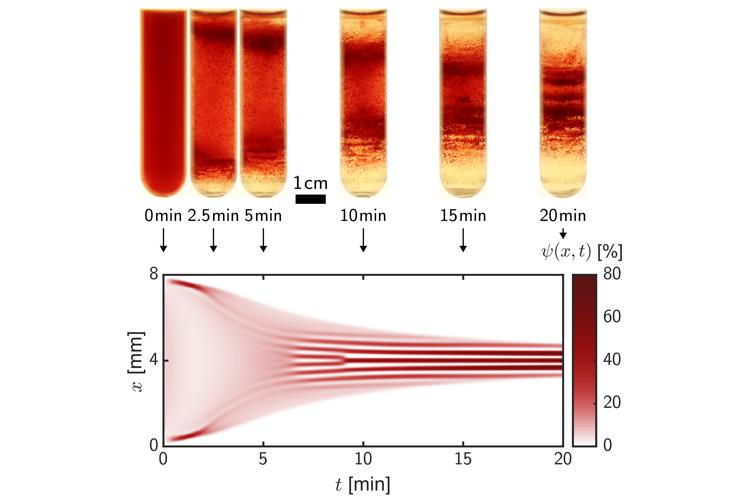- Imprimer
- Partager
- Partager sur Facebook
- Share on X
- Partager sur LinkedIn
Séminaire
Le 27 mai 2024

Alexis Darras (Saarland University, Germany)
Nowadays, blood physics is a subject of intense research focus. Namely, studies on blood rheology, microfluidics, erythrocyte aggregation and membrane physics of single cells have been reported in a wide body of scientific literature. However, the physics of some blood tests and processings commonly used in the medical field has received only little attention. In this seminar, I'll describe in detail our current investigation on one particular process: the age separation of red blood cells in a density gradient.
Centrifugation of erythrocytes (aka Red Blood Cells, RBCs) in self-forming percoll gradient is a protocol often used as a way to sort RBCs by age. However, a pattern formation of discrete bands is systematically observed along the continuous density gradient. Although early studies mentioned that aggregation between cells might modify their spatial distribution, it is debated whether a population with continuous density distribution can form discrete bands. Here, we develop a continuous equation, considering the aggregation of cells with a continuous density distribution, which describes the macroscopic evolution of RBCs concentration in a density gradient. Using numerical resolutions, we demonstrate that the competition between iso-density distribution and aggregation is sufficient to create band patterns. Our model reproduces qualitatively the temporal evolution observed in the conventional experimental protocol, but also predicts several types of bifurcation-like behaviors for the steady-state patterns in constant gradients, when the volume fraction and aggregation energy of the cells are varied. We developed an experimental protocol where a constant density gradient is formed and where the results of the model match the observed patterns. The competition between aggregation and iso-density distribution is therefore a novel physical mechanism leading to a new and rich pattern formation system.
To conclude this presentation, I'll give an overview of some other interesting, but still challenging, applications of blood physics in medical testing, along preliminary results.
Contact: Alexander Farutin
Date
14:00
Localisation
LIPhy, salle de conférence
- Imprimer
- Partager
- Partager sur Facebook
- Share on X
- Partager sur LinkedIn